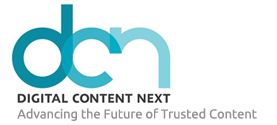The streaming video marketplace is expanding and evolving at a breakneck pace. While the market was growing long before Covid, the pandemic lockdown spiked demand and cemented new habits for consumers across demographics. Consumers have devloped a ravenous appetite for streaming, which content providers are happy to satisfy.
Not surprisingly, the number of policy issues surrounding streaming video has grown at a similar pace. Some of these issues have been around for a while, while others emerged just this year. As with all expanding markets, it is critical to monitor regulatory and policy activities to ensure that the market is positioned for healthy growth. To that end, let’s review the current slate of legal, regulatory and legislative issues poised to impact streaming video companies.
New taxes and fees
A host of states and municipalities are attempting to extend franchise fees, which are typically levied on cable and internet service providers, to streaming video companies. Similarly, the Federal Communications Commission (FCC) is considering requiring edge providers (aka companies with apps and websites) to pay into the Universal Service Fund (USF).
The rationale is that the companies that provide high quality, high bandwidth content to consumers should pay for the infrastructure that enables consumers to access this content. Of course, this position fails to recognize the fact that franchise fees and the USF were initially established as a way for cable companies and ISPs to return the benefit they gained from public investment in their infrastructure.
Streaming video companies, however, did not receive any federal or local funding. While actions like these would be detrimental to the entire streaming market, they would disproportionately impact small and diverse content creators because they don’t typically have diversified revenue streams. Instead of levying new taxes on an emerging set of services, it would be better for Congress to continue funding broadband deployment initiatives, which helps level the playing field for equitable access.
Emergency alerts
In 2021, the FCC asked for comments on whether streaming companies should be required to broadcast emergency alerts in the same way that traditional television and cable providers are required to. DCN weighed in with big concerns about the technical and financial burdens of that proposal. We also noted that the costs would likely significantly outweigh the benefits when you consider the fact that consumers already receive these alerts on their phones. The agency prepared a report for Congress and appears to have shelved the proposal for now, but it’s worth monitoring.
Caught up in the techlash
Policymakers at the state and federal level have grown increasingly antagonistic toward big tech platforms. With each new scandal, we typically see a rash of bills introduced in an effort to right the wrongs. Unfortunately, sometimes those bills are overly broad, and they inadvertently affect streaming video companies.
One recent example is the Kids Online Safety Act (KOSA), which was introduced by a group of bipartisan well-meaning Senators after whistleblower Frances Haugen testified before Congress about Meta’s predatory practices with regard to kids on their platforms. The bill purports to address the role that “social media platforms play… in the mental health crisis for children and teens.” However, the bill would also cover streaming video companies which offer professionally-curated content in a safe environment – pretty much the polar opposite of social media services teeming with user generated content.
Data rights and consumer privacy
In the absence of a federal privacy law, five states have now passed their own privacy laws. Of course, these laws apply to a wide range of businesses, impacting far more than streaming companies. However, the new laws will certainly have an impact on how the sector develops, particularly on how consumer data is collected and used.
For example, the California Privacy Rights Act (CPRA) builds on existing California privacy law to provide consumers with robust rights to delete, correct and port data that companies hold about them. Starting next year, consumers will also enjoy easy ways to opt out of the sale or transfer of their data.
Meanwhile, big tech companies like Amazon and Google are battling with newer platforms like Roku, and a raft of advertising-supported video providers, to carve out space in the streaming business with an eye toward harnessing valuable flows of consumer data. If this plays out like the broader web, then whoever controls the data will corner the revenue.
As the streaming video market matures, more policy issues will surface. It’s the hallmark of every evolving sector. The question is whether the streaming video market can continue to grow with healthy competition or whether punitive fees and the collateral effects of dealing with the bad behavior of tech platforms will gum up the works.
To ensure that new entrants and innovation have the opportunity to flourish, DCN will continue to advocate for sound legislation that addresses the specified harms and that unnecessary hurdles are removed. Consumers have high expectations, so should we.

 Archive
Archive















